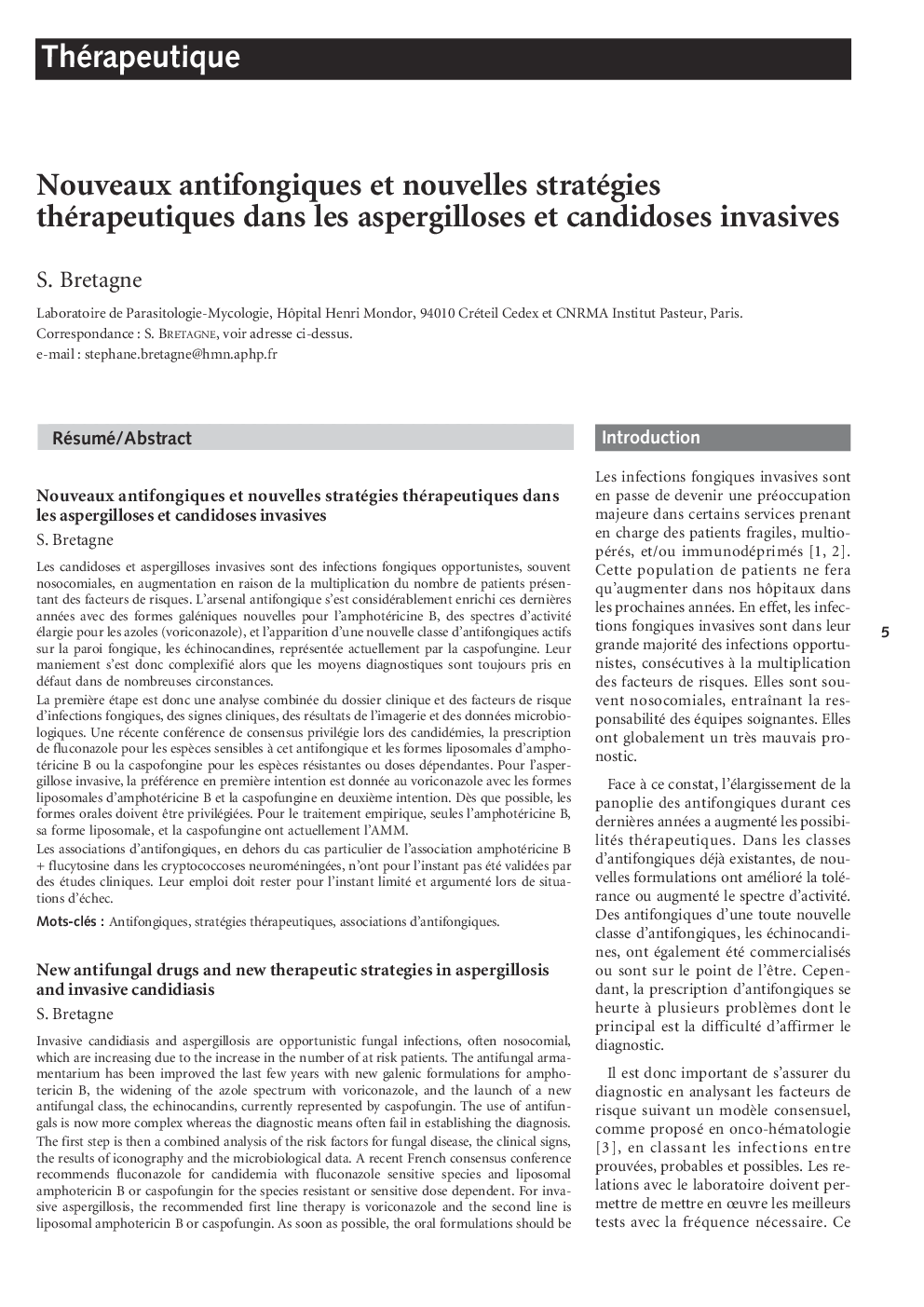| Article ID | Journal | Published Year | Pages | File Type |
|---|---|---|---|---|
| 9275278 | Antibiotiques | 2005 | 11 Pages |
Abstract
Invasive candidiasis and aspergillosis are opportunistic fungal infections, often nosocomial, which are increasing due to the increase in the number of at risk patients. The antifungal armamentarium has been improved the last few years with new galenic formulations for amphotericin B, the widening of the azole spectrum with voriconazole, and the launch of a new antifungal class, the echinocandins, currently represented by caspofungin. The use of antifungals is now more complex whereas the diagnostic means often fail in establishing the diagnosis. The first step is then a combined analysis of the risk factors for fungal disease, the clinical signs, the results of iconography and the microbiological data. A recent French consensus conference recommends fluconazole for candidemia with fluconazole sensitive species and liposomal amphotericin B or caspofungin for the species resistant or sensitive dose dependent. For invasive aspergillosis, the recommended first line therapy is voriconazole and the second line is liposomal amphotericin B or caspofungin. As soon as possible, the oral formulations should be prescribed. For the empirical treatment, only amphotericin B deoxycholate, liposomal amphotericin B, and caspofungin are licensed. The combinations of antifungals, apart from the amphotericin B + flucytosine association for neuromeningeal cryptococcosis, have not been validated by clinical studies. Their use should remain cautious and limited to well defined failures.
Related Topics
Health Sciences
Medicine and Dentistry
Infectious Diseases
Authors
S. Bretagne,
